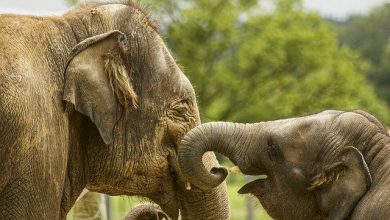The negative things that the agrarian revolution brought

There are two ways to develop something – evolutionary and revolutionary. The first is slow: the most valuable parameters are selected compared to others by trial and error. In the second, changes occur quickly and are accompanied by a sharp change in something. And the transition from a hunting-gatherer lifestyle to a sedentary one was as profound as a bucket of ice water after a hot sauna.
The agricultural revolution, humankind’s transition to sedentary agriculture, led to substantial changes, most of which were highly positive. For example, life expectancy (as well as its quality), safety has increased because wild animals do not dare to attack a large group of people, and so on. But the agricultural revolution also has a negative side.
This laid the foundation for pandemics
Those engaged in agriculture practically did not take risks, unlike hunters, who had to get food constantly. With the agrarian revolution, people eliminated the risk of being torn apart by a wild animal while hunting, but a more serious threat appeared – viruses and bacteria.
Most of the diseases that caused pandemics began in animals and then spilled over into humans. In addition, with the agrarian revolution, people began to stray into large communities, which first grew into villages and then into cities. And for viruses and bacteria, many living things concentrated in one place is an ideal testing ground for developing methods of implementation and operation.
Our teeth no longer fit our jaws
With the transition from gathering and hunting to a sedentary lifestyle, people’s diet has changed. Food became softer and more accessible, which caused the jaws to shrink because now people did not need a strong lower jaw to chew on raw, tough food like meat. However, the teeth remained practically the same both in shape and size.
Because of this, approximately one in five people suffer from misaligned teeth and other problems that people did not have in the days of gathering and hunting.
Working hours have changed for the worse
Working in the fields is much easier and takes less time than finding food and shelter for a nomadic lifestyle. However, research shows that hunters and gatherers had at least ten more hours of free time per week than those who worked in the fields.
As for women, their working hours increased dramatically with the transition from hunting and gathering to a sedentary life because now they had not only to perform traditional duties but also work in the field.
Nutrition has become less balanced
Undoubtedly, now thousands of products for every taste are available to you, which became possible thanks to the agrarian revolution. However, during the transition to a sedentary lifestyle and after a long time, the average farmer or livestock breeder had an extremely meager diet
The first sedentary people had, at best, several grains in their diet, which led to a lack of nutrients and, as a result, to the emergence of serious diseases.
As for hunter-gatherers, their diet was much more varied and balanced and consisted of meat, fruits, vegetables, herbs, nuts, and other foods.
Mortality increased
It is generally accepted that hunter-gatherers lived a little because their way of life was more dangerous than sedentary peoples. But science does not support the hypothesis that nomadic people’s lives were much shorter than that of a typical peasant.
Except for the high infant mortality rate, which was approximately the same among both nomadic and sedentary peoples, the mortality rate among early farmers and livestock breeders was even higher because there was often a shortage of food and, as a result, hunger.
In addition, as we mentioned above, the peasants’ diet became much more scarce, due to which they lacked vitamins, which reduced their life expectancy. All this led to a relatively high mortality rate in early sedentary cultures, exceeding that of hunter-gatherers.
Society has become more elite
In contrast to the egalitarian hunter-gatherer society, which assumed more or less equal rights for all its members, the sedentary culture became more and more elite, putting sexism, racism, and other not very pleasant things in the leading positions.
For example, the formation of patriarchy, which was observed precisely during the agrarian revolution. With the transition to a sedentary lifestyle, it became clear that women are less adapted to hard work due to physical differences. Gradually, the role of women in the field decreased, and with the advent of money and wages, a gender gap appeared in the assessment of this very work for objective reasons. Even when these objective reasons were erased by scientific progress, the worldview that had been preserved for millennia remained.
This led to an unenviable fate for animals
The agricultural revolution marked the beginning of a completely different species of animals – domestic animals. In the process of domestication, many animals lost their natural instincts and changed significantly. It may seem that now the attitude towards animals is even more humane, and in captivity, they live much better, but you need to understand that they have no choice.
To put it simply, the fight between hunter-gatherers and an animal in most cases was a test of this animal’s endurance and intelligence. If it was lucky, it escaped from spears and stones. Nowadays, domestic animals are in cages, and the only fate in store for them is to go for a steak.




